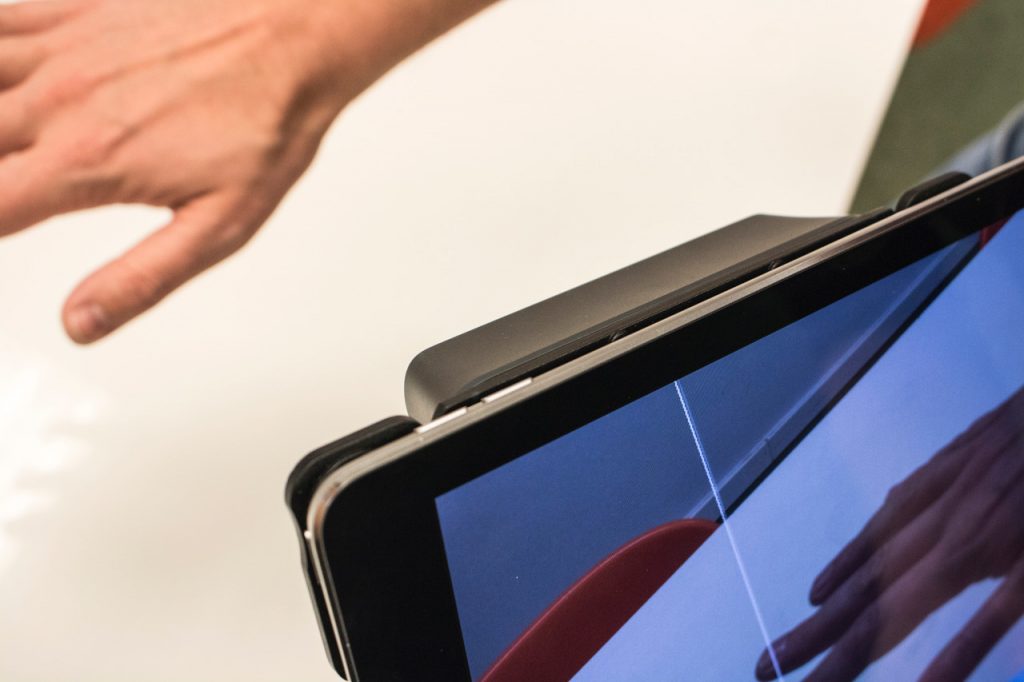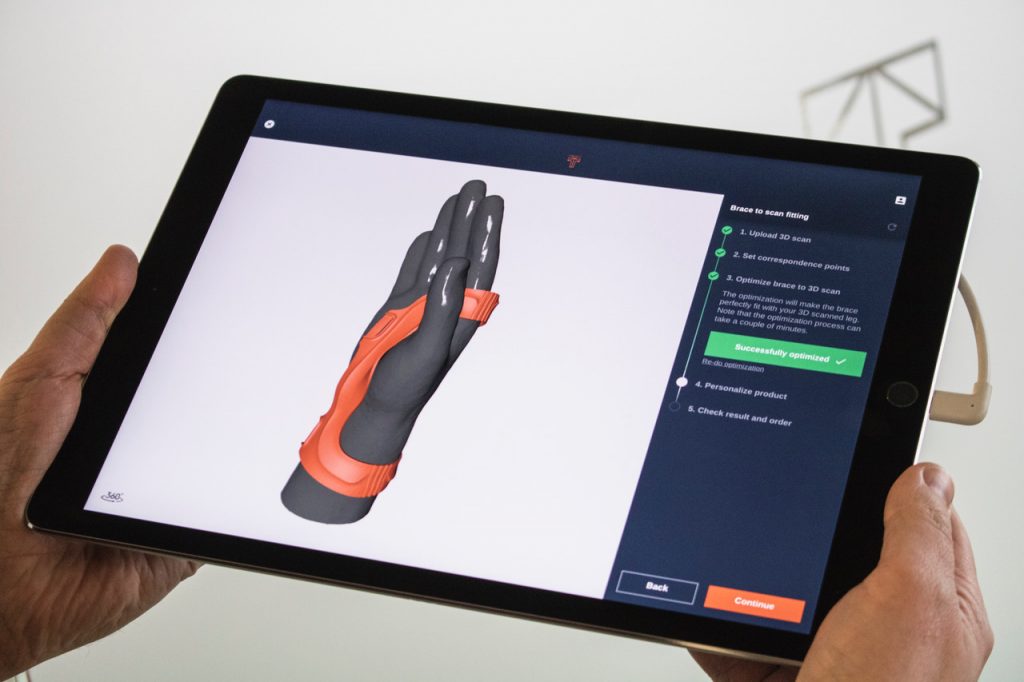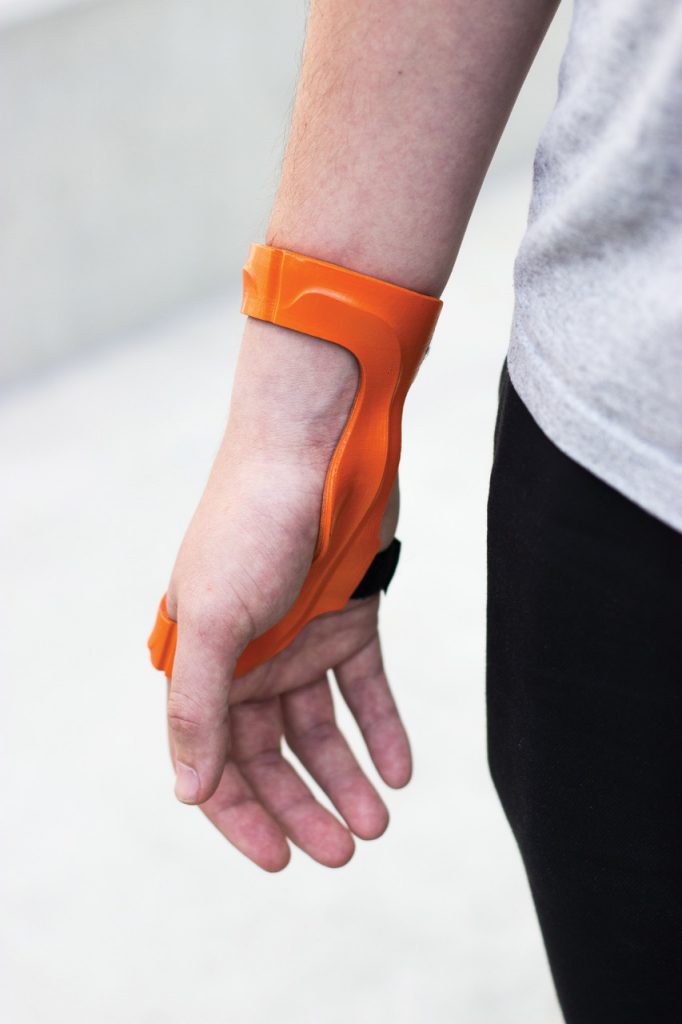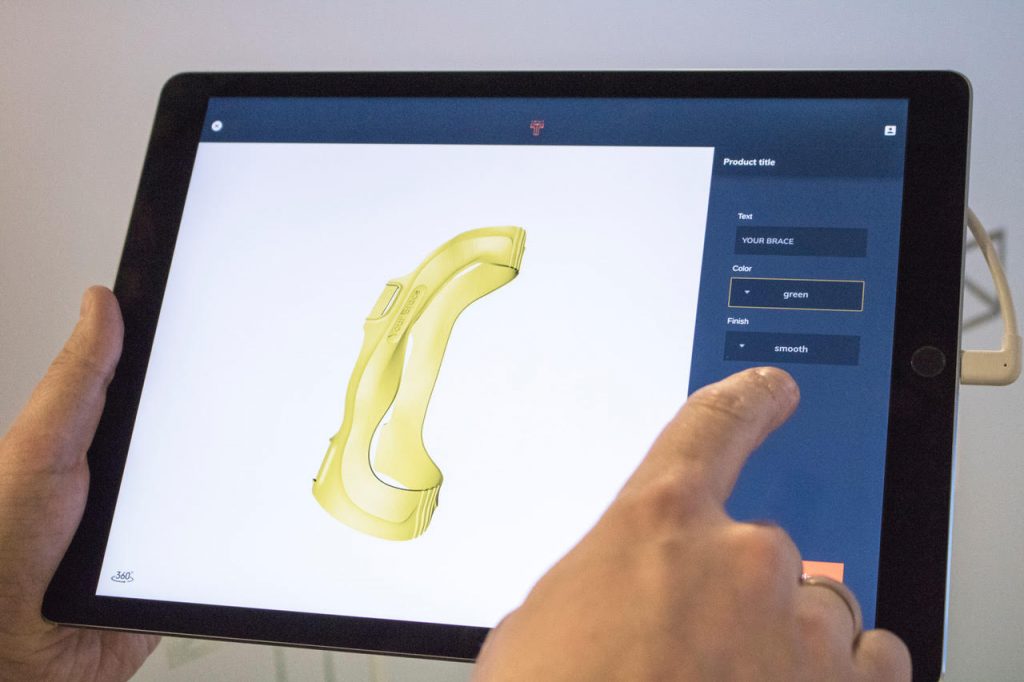Twikit is a Belgium based startup that makes mass customization software. The firm created parametric software that can be used to, within well-defined parameters, make unique 3D printed products. For BMW, for example, the company created a tool that would let Mini owners customize polymer car parts to their liking. Mini owners can now get 3D printed customized outside panels with their own text or parts that let their LED lamps spell out their names. By letting a person customize something, ensuring that this can be visualized in the browser and then also actually be a file that can be manufactured by Twikit ties unique inputs to makable things. Twikit’s software takes the potential of 3D printing to make unique things and turns it into something that many can use (within limits).

Twikit has just released its Twikbot software platform for Prosthetics and Orthotics. Now Twikit can not only be used for customized car parts or parts of consumer electronics but also for medical applications. With the Twikbot platform, companies can now create workflows where unique scan data gets turned into a 3D printable file. Defined limits of the 3D printing process, essential structural elements, and part constraints can be defined in advance. Once this has occurred, and if the 3D scan is good, the path from 3D scan to 3D file for printing is automatic. We’ve seen a lot of movement on implementing more and more prosthetics and orthotics in 3D printing. These are increasingly being made using FDM (FFF), SLS and MFJ technologies but so far there hasn’t been an automated customization package that could mass customize 3D prints for all platforms. We interviewed Twikit’s CTO Olivier De Deken about a new development that the firm has just released.

What does Twikit do for orthotics & prosthetics?
3D printing is a cornerstone technology in the digital transformation of the orthotics and prosthetics market. It also enables to design better products with a perfect fit. In order to obtain a working flow, different dots need to be connected. In comes Twikit.
Twikbot engine takes care of product customization starting from a 3D scan, creating the perfect shape and fit. The cloud software automates your design process and delivers a unique production-ready file. Additionally, Twikit provides design engineering and integration services to implement the technology.

How does it work?
It is important to note that this solution has been developed for Certified Prosthetists Orthotists. CPO’s can create a custom 3D product by using the easy-to-use interface. After choosing the product type, they are able to upload a 3D scan. The CPO sets all required parameters (e.g. adaptations of the 3D scan, measurements) and corresponding points on the scan. Based on this information, the product template (e.g. a knee brace) is automatically reshaped to fit the patients scan.
Finally, the product (e.g. the knee brace) can be finetuned with aesthetical options such as patterns and color.
The CPO can review and order when she is ready. The application runs in the cloud for full scalability and is easily accessible on all devices (including tablets).The Twikbot platform will now create a production-ready-file in the cloud. The production files can be directly connected with the Order Services Module which is used to distribute the parts and parameters to the internal or external manufacturer.

How does it save money?
With the solution in place, either the manual production flow and/or the flow to manually design each unique digital model becomes obsolete. This saves many hours of manual labor and it eliminates errors. Through further automation of the order process, files can be processed quicker resulting in a scalable solution for the offerings of Orthotic and Prosthetic brands.
What will happen with the medical scan data of my patient?
The production file based on the medical scan is assigned with an encrypted code for further tracking and handling. No personal data is stored or spread unless consented to by the patient.
What is the output in terms of files?
Twikbot exports production ready files for additive manufacturing (.stl) or vector files (cutting) depending on the product.
What 3D scan data can I input? and how?
3D scan data can be obtained from 3rd parties or from handheld tablet compatible scanners like Occipital’s Structure Sensor. The 3D scan can be uploaded in the applications where further operations like scan checkup and manipulation can be done.
Subscribe to Our Email Newsletter
Stay up-to-date on all the latest news from the 3D printing industry and receive information and offers from third party vendors.
Print Services
Upload your 3D Models and get them printed quickly and efficiently.
You May Also Like
3D Printing News Briefs, June 11, 2025: Sustainability, Automotive Tooling, & More
We’re starting with sustainability news in today’s 3D Printing News Briefs, as EOS has strengthened its commitment on climate responsibility, and Zestep is making 3D printing filament out of eyewear...
3D Printing 50 Polymer Stand-In Parts for Tokamaks at the PPPL & Elytt Energy
Of all the world’s things, a tokamak is one of the hardest, most complex, expensive and exacting ones to make. These fusion energy devices make plasma, and use magnets to...
3D Printing News Briefs, May 17, 2025: Color-Changing Materials, Humanoid Robot, & More
We’re covering research innovations in today’s 3D Printing News Briefs! First, Penn Engineering developed 3D printed materials that change color under stress, and UC Berkeley researchers created an open source,...
Firehawk Aerospace Partners with JuggerBot 3D, Gets $1.25M from AFWERX for 3D Printed Propellants
Texas-based Firehawk Aerospace, an advanced energetic materials firm that works with aerospace and defense applications, announced a strategic partnership with JuggerBot 3D, an Ohio-based large-format 3D printer manufacturer. Together, the...

































